


A Culinary Journey Of Sensory Delights

There's something truly magical about a flavorful feast. It's not just a meal; it's a celebration of taste, aroma, and the joy of sharing exceptional food with loved ones. Flavorful feasts take you on a culinary journey, offering a diverse and enchanting array of dishes that leave a lasting impression and create unforgettable memories.
The Essence Of Flavorful Feasts
A flavorful feast is more than just an abundance of food; it's an ode to the art of cooking. These feasts are characterized by an explosion of flavors, captivating aromas, and a diverse selection of dishes that cater to a variety of tastes and preferences. Whether it's a Thanksgiving feast, a summer barbecue, or a festive holiday meal, the essence of a flavorful feast lies in the careful curation of dishes that tantalize the senses and evoke a sense of satisfaction.
The Appeal Of Flavorful Feasts
Why are flavorful feasts so appealing? Here are some compelling reasons:
1. Celebration: Flavorful feasts are often associated with special occasions, holidays, and gatherings. They serve as a way to commemorate and celebrate the moments that matter most.
2. Variety: These feasts offer a diverse selection of dishes that cater to different palates. From savory to sweet, from mild to spicy, there's something for everyone to enjoy.
3. Connection: Preparing and sharing a flavorful feast can strengthen bonds and create a sense of connection. It's a communal experience that fosters togetherness.
4. Sensory Delights: The combination of flavors, aromas, and textures in a flavorful feast creates a sensory adventure. It's a delightful exploration of the culinary world.
5. Tradition: Many flavorful feasts are rooted in tradition, carrying the legacy of generations. They provide an opportunity to pass down family recipes and customs.
The Art Of Crafting Flavorful Feasts
Creating a flavorful feast is an art that requires thought, care, and attention to detail. Here are some tips for crafting a memorable and delicious feast:
1. Plan Ahead: Start planning your feast well in advance. Consider the number of guests, dietary restrictions, and the dishes you'd like to feature.
2. Balance Flavors: Ensure a balance of flavors in your menu. Include savory, sweet, spicy, and tangy dishes to create a harmonious palate experience.
3. Focus On Presentation: A flavorful feast is not just about taste; it's also about visual appeal. Garnish dishes with fresh herbs, colorful vegetables, and creative plating.
4. Try New Recipes: Experiment with new recipes and techniques to keep your feast exciting and fresh. Add a twist to traditional dishes or introduce international flavors.
5. Incorporate Seasonal Ingredients: Using seasonal ingredients ensures freshness and the best possible flavors. It also adds a touch of seasonality to your feast.
6. Share The Work: Don't be afraid to ask for help or delegate tasks to family or friends. Cooking together can be a bonding experience and alleviate some of the stress.
7. Consider Dietary Restrictions: Be mindful of dietary restrictions and preferences among your guests. Provide options for vegetarians, vegans, or those with allergies.
The Joy Of Flavorful Feasts
Flavorful feasts are more than just a meal; they're an experience that engages all the senses. These culinary gatherings bring people together, offering a diverse selection of dishes that cater to various tastes and preferences. Whether it's a traditional holiday feast, a summer barbecue, or an intimate dinner party, the joy of a flavorful feast lies in the exploration of flavors, the celebration of togetherness, and the creation of unforgettable memories. So, roll up your sleeves, gather your ingredients, and embark on a culinary journey that promises delightful flavors, captivating aromas, and the pleasure of sharing good food with those you cherish.
Mastering Efficiency In The Kitchen
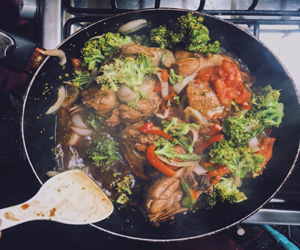 Benefits Of Quick Cooking
Benefits Of Quick Cooking
Here are some compelling reasons to embrace quick cooking:
1. Time Efficiency: The most obvious benefit is that quick cooking saves time. You can have a meal on the table in minutes, making it ideal for busy weeknights or when unexpected guests drop by.
2. Reduced Stress: Traditional cooking can be stressful, especially when time is limited. Quick cooking techniques minimize stress by simplifying the process and eliminating the need for elaborate preparations.
3. Fresh And Healthy: Quick cooking doesn't mean compromising on freshness and nutrition. With the right ingredients and techniques, you can create healthy and flavorful meals without spending hours in the kitchen.
4. Versatility: Quick cooking isn't limited to specific types of dishes. You can apply these techniques to a wide range of cuisines and recipes, from stir-fries and sheet pan dinners to simple salads and pasta dishes.


The Culinary Comfort Of Nourishing The Soul
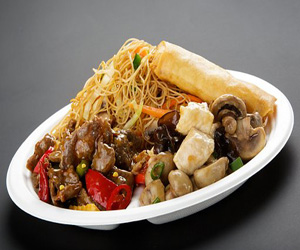 One of the defining features of cozy meals is their ability to evoke a sense of nostalgia. These are the recipes that transport us back to cherished moments in our lives. A pot of simmering chili on the stove might remind us of family gatherings around the fireplace, while a bubbling pot of chicken and dumplings might evoke the comforting embrace of a grandmother's kitchen. Cozy meals are not just about eating; they are about reliving memories and creating new ones.
One of the defining features of cozy meals is their ability to evoke a sense of nostalgia. These are the recipes that transport us back to cherished moments in our lives. A pot of simmering chili on the stove might remind us of family gatherings around the fireplace, while a bubbling pot of chicken and dumplings might evoke the comforting embrace of a grandmother's kitchen. Cozy meals are not just about eating; they are about reliving memories and creating new ones.
Health And Dietary Considerations
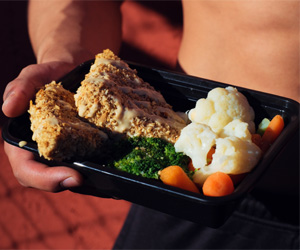 Pasta: Traditional wheat-based pasta is a staple of many diets.
Pasta: Traditional wheat-based pasta is a staple of many diets.
Cereals: Wheat is a common ingredient in breakfast cereals.
Flour: Wheat flour is used in baking, cooking, and as a thickening agent in many recipes.
Sauces And Gravies: Some sauces and gravies are thickened with wheat flour.
Beer: Many beers are brewed using wheat, making them unsuitable for those following a wheat-free lifestyle.
Motivations For A Wheat-Free Lifestyle
Celiac Disease: Celiac disease is an autoimmune disorder in which the ingestion of wheat triggers an immune response, leading to damage in the small intestine. Individuals with celiac disease must follow a strict wheat-free diet to manage their condition.
Wheat Allergies: Some individuals experience allergic reactions to wheat, which can range from mild to severe and can include hives, digestive distress, or anaphylaxis.
Non-Celiac Wheat Sensitivity: Non-celiac wheat sensitivity is characterized by adverse reactions to wheat without the autoimmune response seen in celiac disease. Symptoms may include digestive discomfort, fatigue, and headaches.
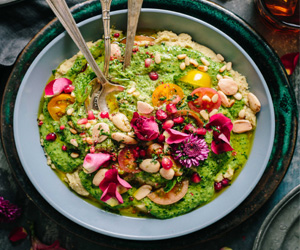 Fresh Ingredients As Key Players
Fresh Ingredients As Key Players
Flavorful plant-based cuisine places a strong emphasis on the use of fresh, seasonal ingredients. Fruits and vegetables in their prime, legumes, whole grains, nuts, and seeds form the foundation of these dishes. The freshness and quality of these ingredients not only enhance the taste but also provide a wealth of nutrients, vitamins, and minerals.
Spices And Herbs For Complexity
Spices and herbs are the secret weapons in crafting flavorful plant-based dishes. Ingredients like garlic, ginger, turmeric, cumin, coriander, and a variety of aromatic herbs are used to create layers of complexity in flavors. These natural seasonings not only add depth but also contribute to the health benefits of the dishes.
Umami-Rich Ingredients
Umami, the fifth basic taste, often associated with savory and meaty flavors, is a hallmark of many plant-based recipes. Ingredients like mushrooms, soy sauce, miso, and nutritional yeast are used to add richness and depth to dishes, giving them a satisfying and meaty taste without actual meat.
Texture And Presentation
Texture plays a significant role in the appeal of flavorful plant-based dishes. Ingredients like tofu, tempeh, seitan, and various plant-based meat substitutes offer the chewiness and mouthfeel traditionally associated with animal products.
The Art Of Elevating The Dining Experience
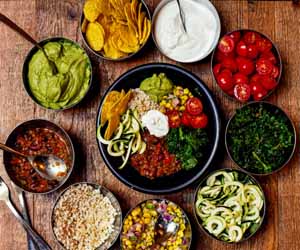 The Ingredients Of Culinary Excellence:
The Ingredients Of Culinary Excellence:
Culinary excellence encompasses a blend of key elements, all of which come together to create unforgettable dining experiences:
1. Creativity And Innovation: At the heart of culinary excellence is creativity. The most celebrated chefs and culinary artists are known for pushing the boundaries, experimenting with flavors, and devising new ways to present familiar ingredients. Innovation drives the evolution of culinary arts, leading to exciting and diverse dishes.
2. Exceptional Skill And Technique: Culinary excellence demands unwavering dedication to honing one's skills. Mastery of various cooking techniques, from sous-vide cooking to knife skills, is essential for chefs and culinary professionals. The artistry in mastering the craft is what sets culinary excellence apart.
3. Quality Ingredients: Superb culinary creations begin with the finest ingredients. Whether it's sourcing organic produce, selecting prime cuts of meat, or hand-picking herbs and spices, using top-quality ingredients is non-negotiable for achieving excellence in cuisine.
Nourishing Your Mind, Body, And Soul
 The Wholesome Pantry is a brand that has wholeheartedly embraced the philosophy of wholesome living. Their mission is to provide individuals with access to products that not only taste delicious but also support a healthier lifestyle. They understand that nourishing your body begins with the food you consume but doesn't end there.
The Wholesome Pantry is a brand that has wholeheartedly embraced the philosophy of wholesome living. Their mission is to provide individuals with access to products that not only taste delicious but also support a healthier lifestyle. They understand that nourishing your body begins with the food you consume but doesn't end there.
Eating For Wholesome Living: At the core of wholesome living is the food we consume. Choosing natural, unprocessed, and nutrient-rich foods is essential. Wholesome living emphasizes fresh produce, locally sourced ingredients, and sustainable agricultural practices. The Wholesome Pantry exemplifies this by offering a range of products that are not only delicious but also made from clean, quality ingredients. By selecting foods without additives, preservatives, and artificial flavors, you're supporting your health and well-being.
Mindful Eating: Wholesome living encourages mindful eating. It's about being present at meal times, savoring every bite, and paying attention to your body's hunger and fullness cues. When you eat mindfully, you're more likely to make healthier food choices and enjoy your meals to the fullest. This approach to eating can help prevent overeating and foster a healthier relationship with food.
The Quest For The Ultimate Cup
 2. Grinding: The grind size of the coffee beans is crucial. It must be just right, neither too fine nor too coarse, to achieve optimal extraction. Professional-grade grinders allow minute adjustments to ensure precise control over the grind size.
2. Grinding: The grind size of the coffee beans is crucial. It must be just right, neither too fine nor too coarse, to achieve optimal extraction. Professional-grade grinders allow minute adjustments to ensure precise control over the grind size.
3. Water Quality: The quality of the water used is a often overlooked but critical factor. Clean, fresh water with the right mineral content is essential for brewing the perfect shot. It ensures that the flavors in the coffee are accentuated and not masked by impurities.
4. Brewing Temperature: Water temperature plays a fundamental role in extracting the desired flavors from the coffee grounds. Espresso demands hot water, typically between 195°F and 205°F (90°C to 96°C), to fully extract the complex aromatic compounds from the beans.
5. Pressure: Espresso machines apply high pressure, usually between 9 and 15 bars, to force hot water through the coffee grounds. This pressure not only ensures efficient extraction but also creates the luscious crema, the golden layer that tops the espresso.
6. Brewing Time: The brewing time is finely tuned, usually around 25-30 seconds.
A Path To Optimal Health
 The Role Of Vitamins
The Role Of Vitamins
Vitamins are involved in a multitude of physiological processes, including energy production, immune system function, and the maintenance of healthy skin, eyes, and bones. They act as cofactors in enzymatic reactions that are crucial for life. Each vitamin has specific roles and functions, and a deficiency in any of them can lead to various health problems.
Fat-Soluble vs. Water-Soluble Vitamins
Vitamins can be categorized into two groups: fat-soluble and water-soluble. Fat-soluble vitamins (A, D, E, and K) are stored in the body's fat tissues and liver. Excess amounts can accumulate, so it's essential to monitor their intake. Water-soluble vitamins (C and the B-complex vitamins, including B1, B2, B3, B5, B6, B7, B9, and B12) are not stored in the body, so regular intake is necessary to maintain optimal health.
The Importance Of A Balanced Diet
A balanced diet that includes a wide variety of foods is the most reliable way to ensure adequate vitamin intake. Fruits, vegetables, whole grains, lean proteins, and healthy fats should all be part of your daily menu. Eating a rainbow of fruits and vegetables is an excellent strategy to obtain a diverse range of vitamins and minerals.